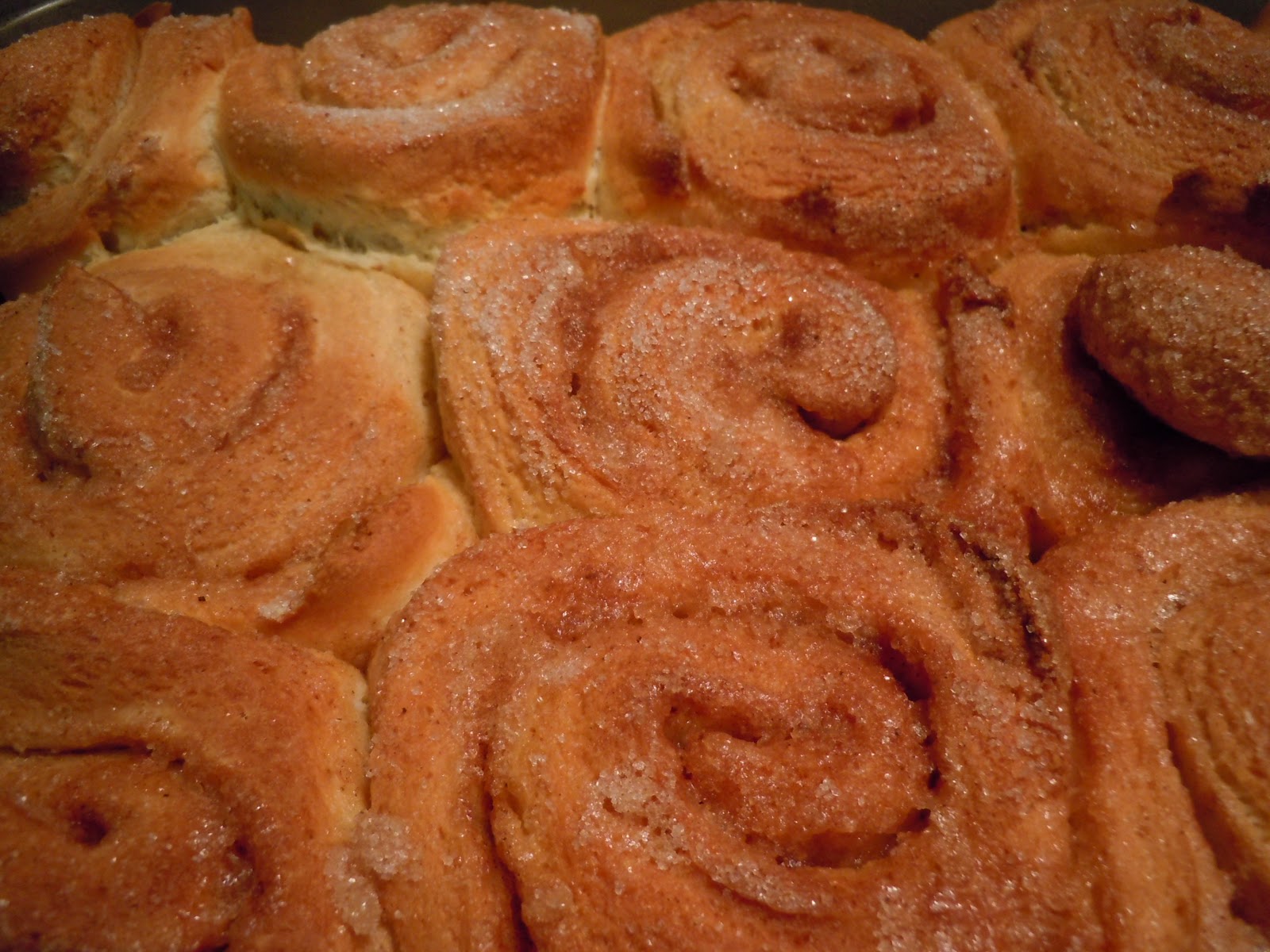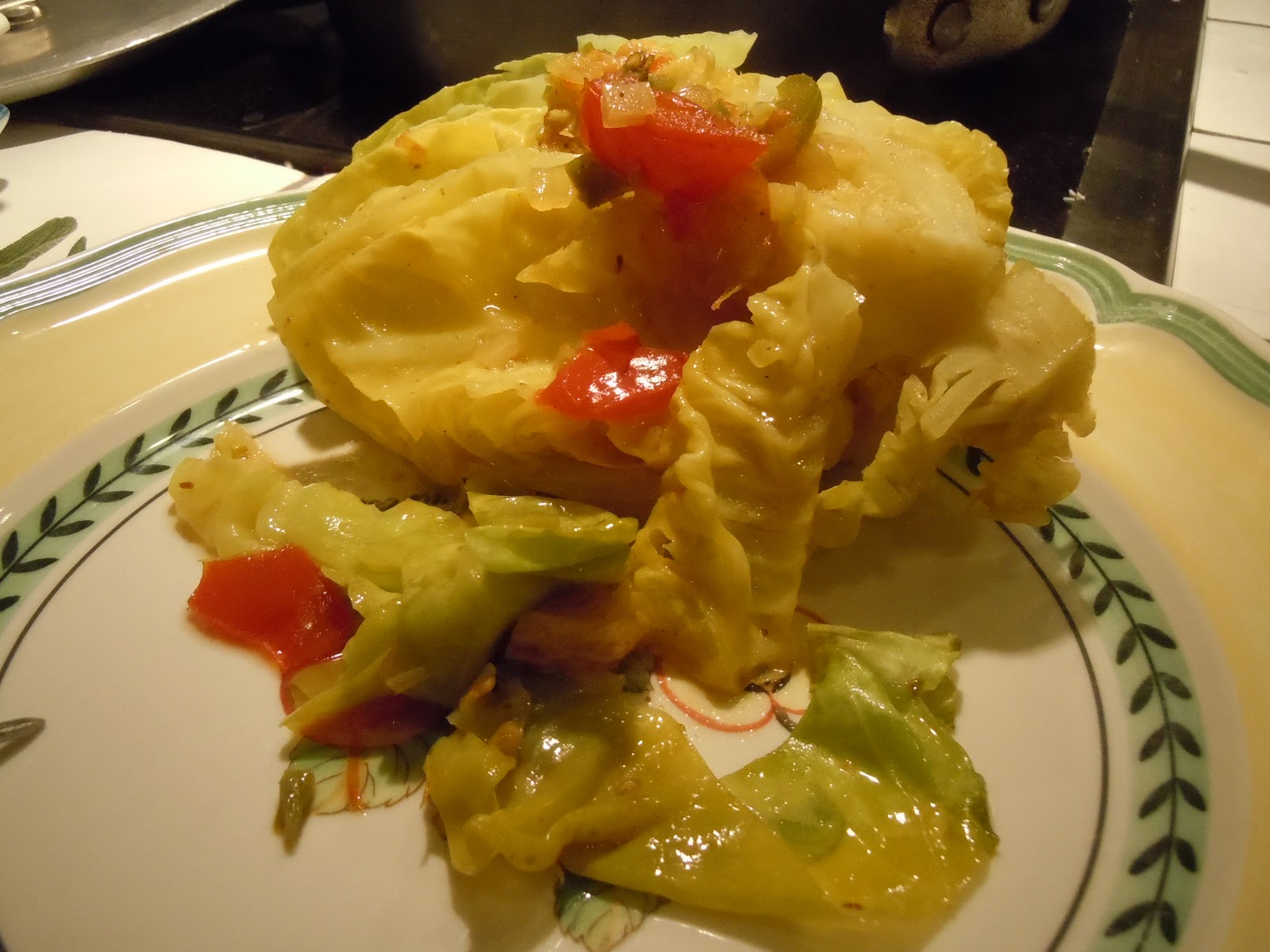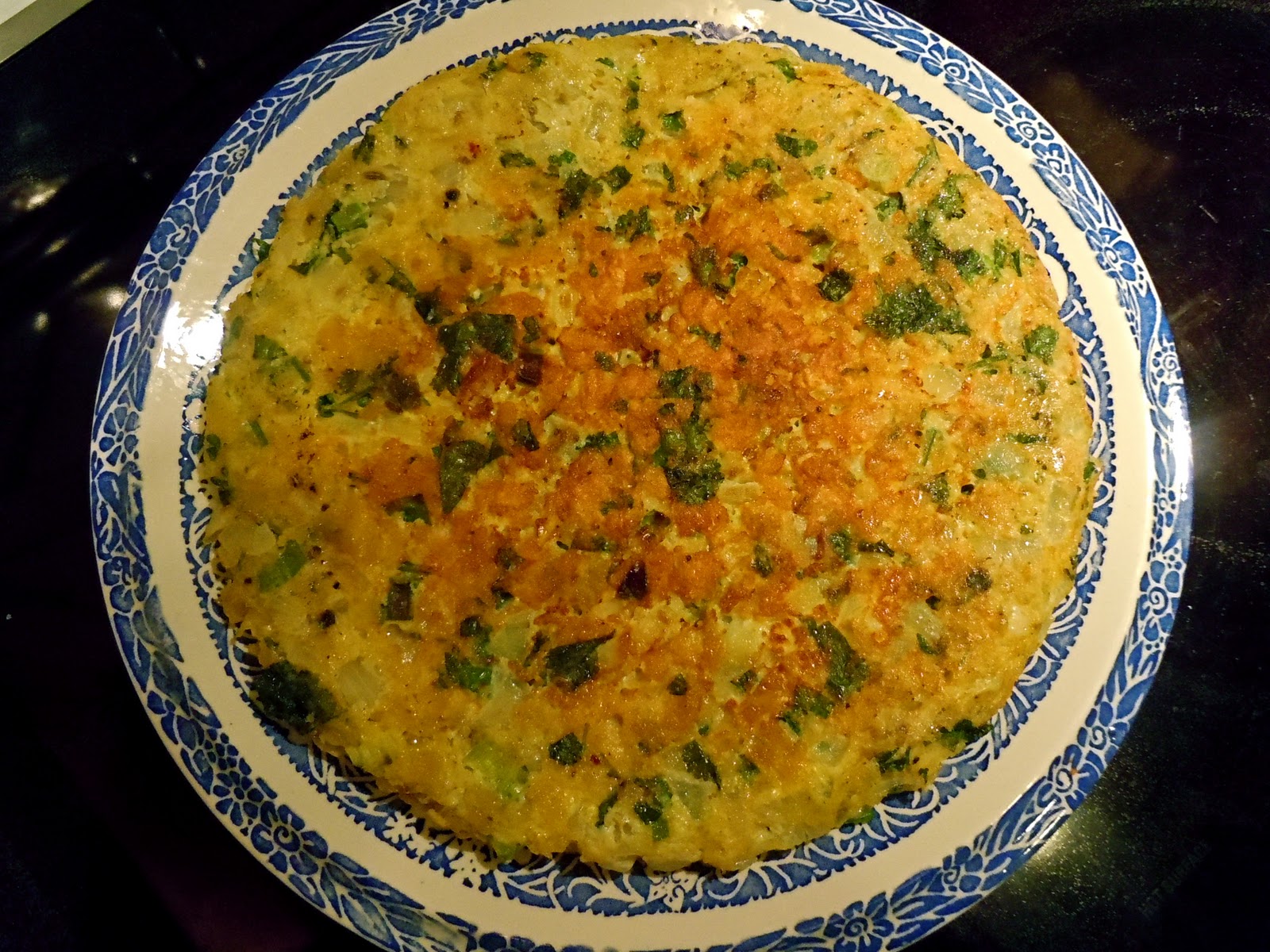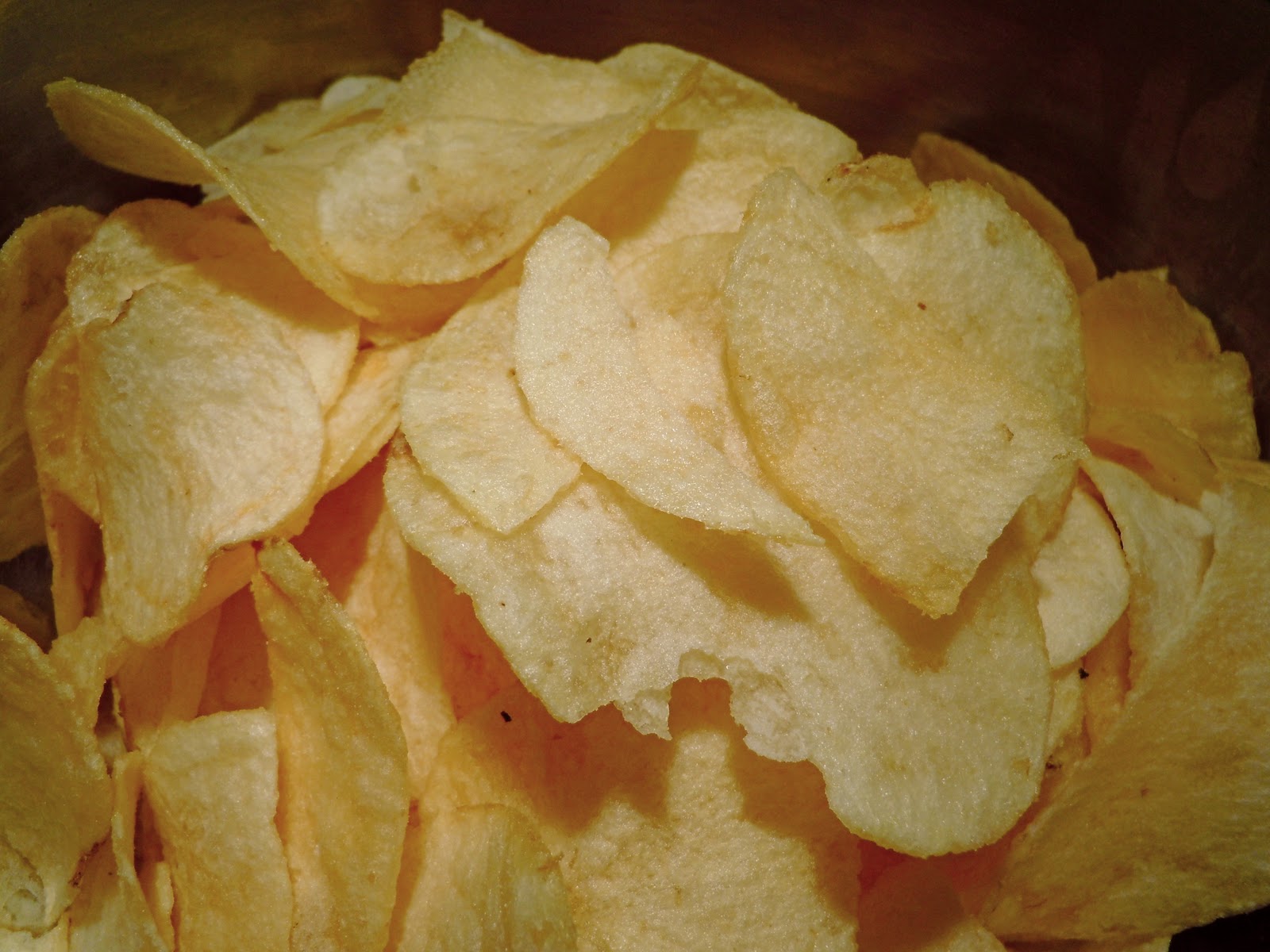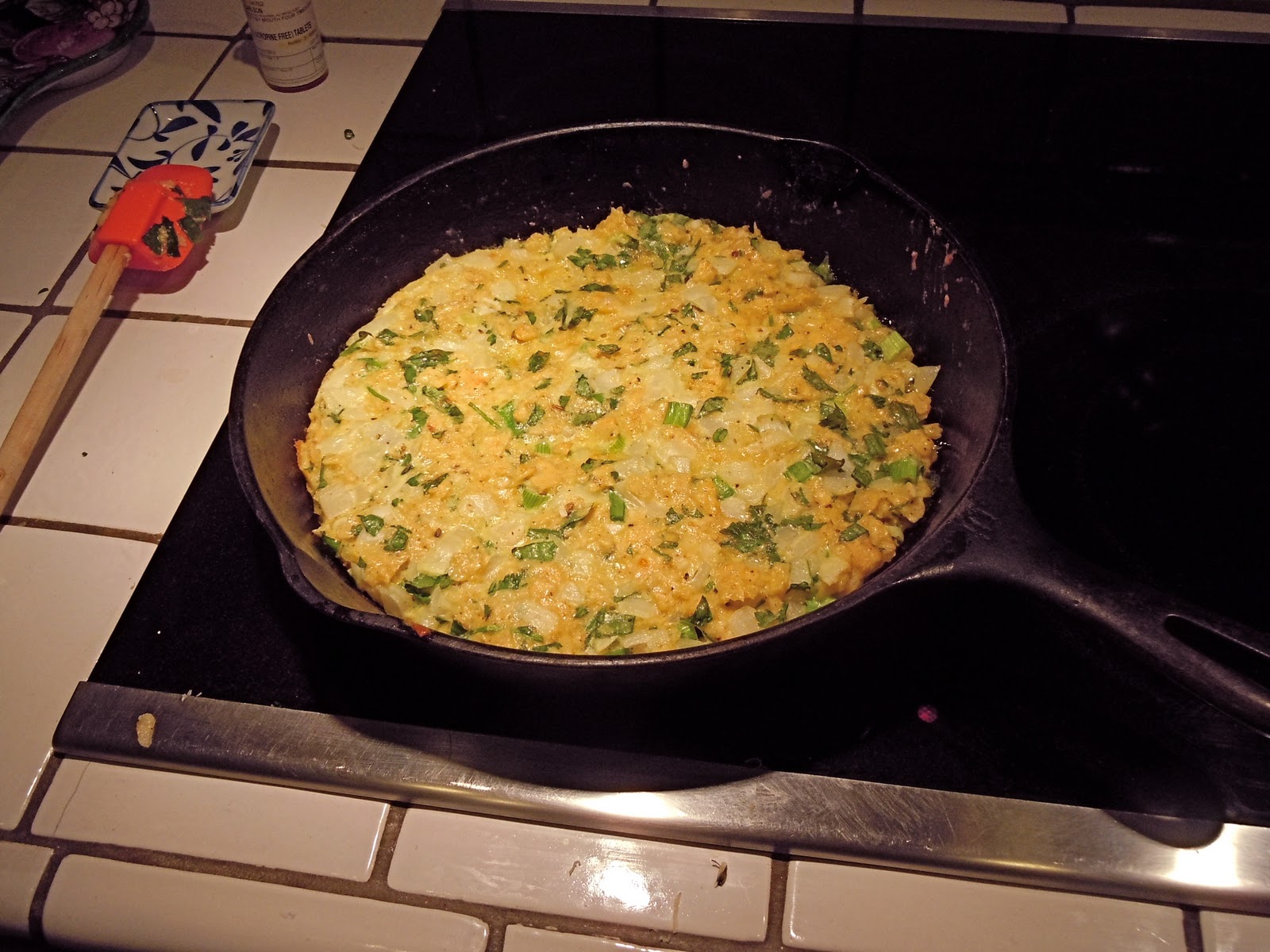And that's the picture of these babies without the frosting. I just couldn't bring myself to take a picture of the completed item. It hurt my arteries too much. I mean, look at the sugar on those rolls. Go ahead, look again. That's all sugar. Well, that and a little cinnamon. Imagine what these things will do to you with frosting.
Which is to say that they'll be the most delicious things you've had in your life. You won't be able to eat more than one. Your body won't let you. There's a point at which your body can't handle any more sugar. You hit that point when you eat half of one of these. And then you keep going. Why? Because they're wonderful. Because they're tasty. Because they're everything that's good and right about waking up too early in the morning to make fresh cinnamon rolls.
Not that I did that. No way. These cinnamon rolls were a late evening snack. Being a yeast product, they require at least 3 hours of rising. Now, whoever wants to get up early enough to enjoy these things right out of the oven as a breakfast item is welcome to it. I, however, will be sleeping late and enjoying my cinnamon roll in the more sensible hours of the afternoon.
Paula Dean, in her infinite wisdom, provides this recipe. And it shows. There are about 2 1/2 sticks of butter in this recipe. At least. Thank you southern comfort.
Ingredients
Dough:
1/4-ounce package yeast (or 7 grams)
1/2 cup warm water
1/2 cup milk
1/4 cup sugar
1/3 cup butter
1 teaspoon salt
1 egg
3 1/2 to 4 cups all-purpose flour
Filling:
1/2 cup melted butter, plus more for pan
3/4 cup sugar, plus more for pan
4 tablespoons ground cinnamon
1 tablespoon ground nutmeg
3/4 cup raisins, walnuts, or pecans, optional 
Glaze:
4 tablespoons butter
2 cups powdered sugar
1 teaspoon vanilla
3 to 6 tablespoons hot water
Directions
Heat oven to 350 degrees F.
In a small bowl, dissolve yeast in warm water and set aside. In a large bowl mix milk, sugar, melted butter, salt and egg. Add 2 cups of flour and mix until smooth. Add yeast mixture. Mix in remaining flour until dough is easy to handle. Knead dough on lightly floured surface for 5 to 10 minutes. Place in well-greased bowl, cover and let rise until doubled in size, usually 1 to 1 1/2 hours (mine took about 2).
When doubled in size, punch down dough. Roll out on a floured surface into a 15 by 9-inch rectangle. Spread melted butter all over dough. Mix sugar and cinnamon and sprinkle over buttered dough. Sprinkle with walnuts, pecans, or raisins if desired. Beginning at the 15-inch side, role up dough and pinch edge together to seal. Cut into 12 to 15 slices.
Coat the bottom of baking pan with butter and sprinkle with sugar. Place cinnamon roll slices close together in the pan and let rise until dough is doubled, about 45 minutes. Bake for about 30 minutes or until nicely browned.
Meanwhile, mix butter, powdered sugar, and vanilla. Add hot water 1 tablespoon at a time until the glaze reaches desired consistency. Spread over slightly cooled rolls.

